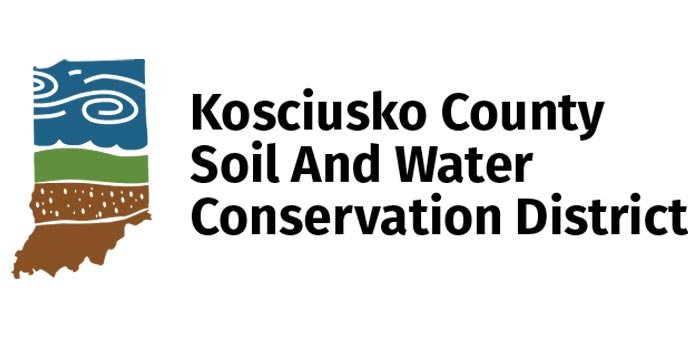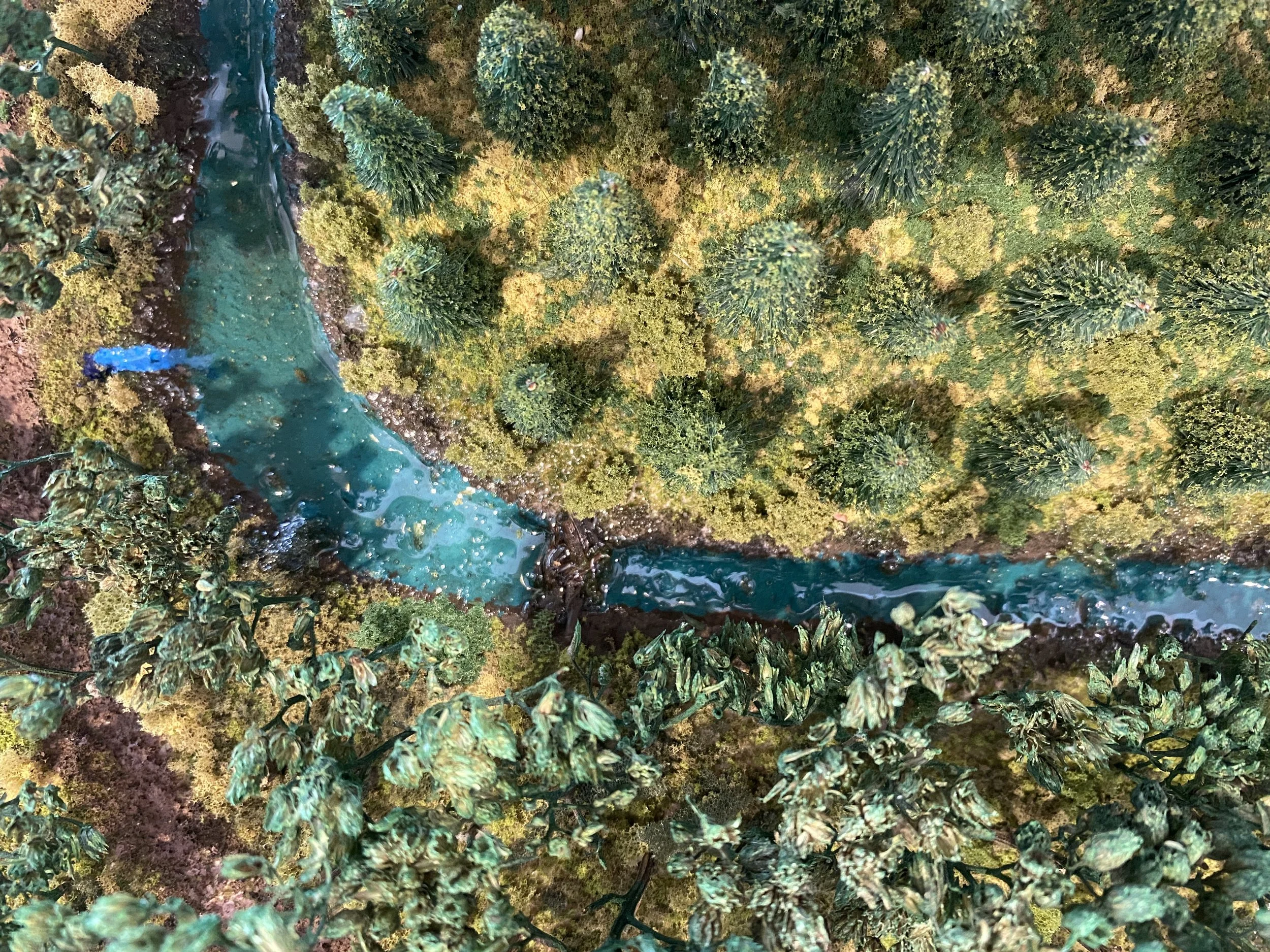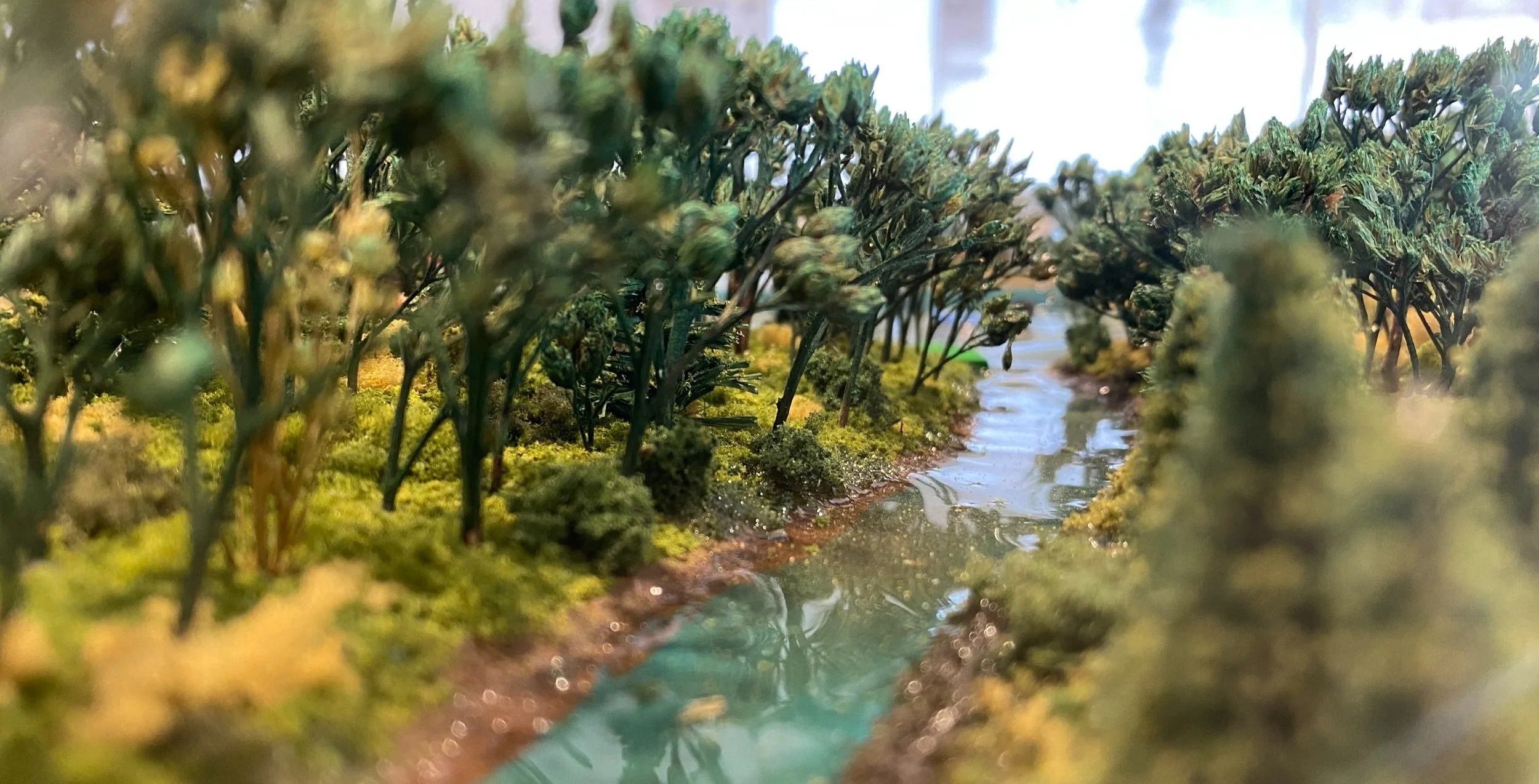Forests
Did you know that forestry is Indiana’s #1 agricultural sector, contributing over $10 billion annually to the economy? Forest management also plays an important role in protecting water quality.
The section of forest with a trail through it has recently been harvested with a method called selection cutting. This means that only certain trees are selected to harvest. Trees could be selected for harvest because they will be sold for timber, or trees may be harvested because their removal will improve the overall health of the forest. The remaining trees in the forest help to hold the soil in place and prevent erosion of sediment into our waters.
The area where all trees have been cut is called a clearcut. Clearcutting can be bad if not managed correctly. When areas are clearcut and the soil is exposed, erosion can occur, and soil can runoff into the water. However, done correctly clearcutting can be a good regeneration strategy for encouraging the growth of trees that require full sunlight, such as oaks and black walnuts. These species provide many benefits to wildlife.
Woodland owners can contact the Soil and Water Conservation District to learn more about woodland management and get connected with a professional forester.
Learn more about forest management from Purdue Extension.
Rivers
Kosciusko County has two rivers including the Tippecanoe River and Eel River.
The name “Tippecanoe” is derived from a Myaamia (Miami) word meaning “buffalo fish”, which is a species of carp. The Tippecanoe River is known as the “river of lakes” because it flows through 88 natural lakes from the headwaters at Crooked Lake in Noble County to where it joins the Wabash River in Tippecanoe County.
The Tippecanoe River has been identified as one of the top ten rivers in the United States to preserve because of the high number of imperiled species that it supports. There are 8 species of federally threatened or endangered freshwater mussels and fishes that live in the Tippecanoe River.
The Eel River is a tributary of the Wabash River, which means that it flows into the Wabash. In recent years, nearly 750 miles of the Eel River and its tributaries have been reopened for fish passage with several dam removals and installation of a fish ladder in Roann.
You can help to conserve our rivers by reducing pollution and preventing erosion on land, in the watershed. By taking action in our watersheds, we all can reduce harmful pollutants from running off into our rivers and impacting wildlife.
Learn more about fish passage from the United States Fish and Wildlife Service (USFWS).


